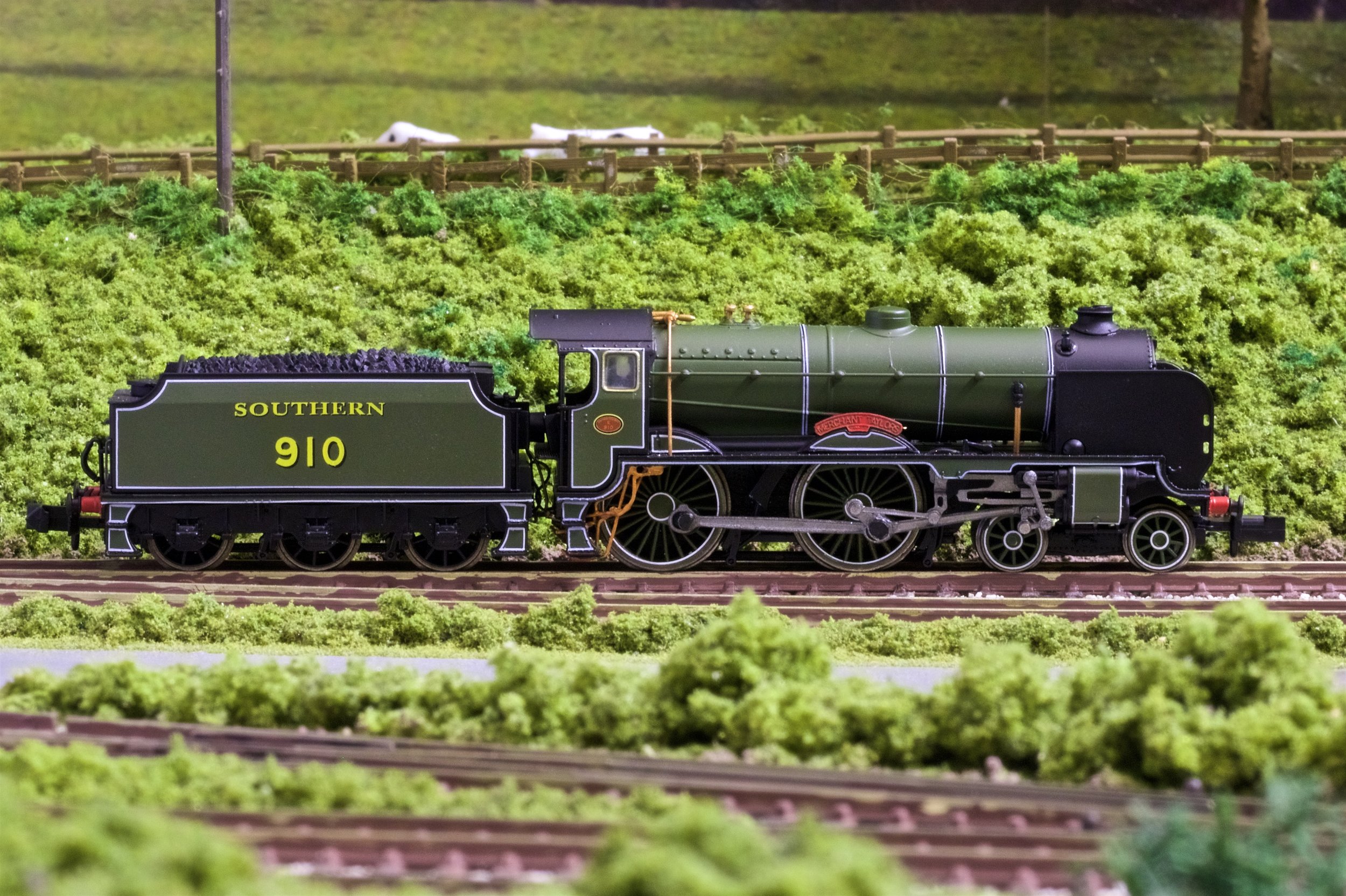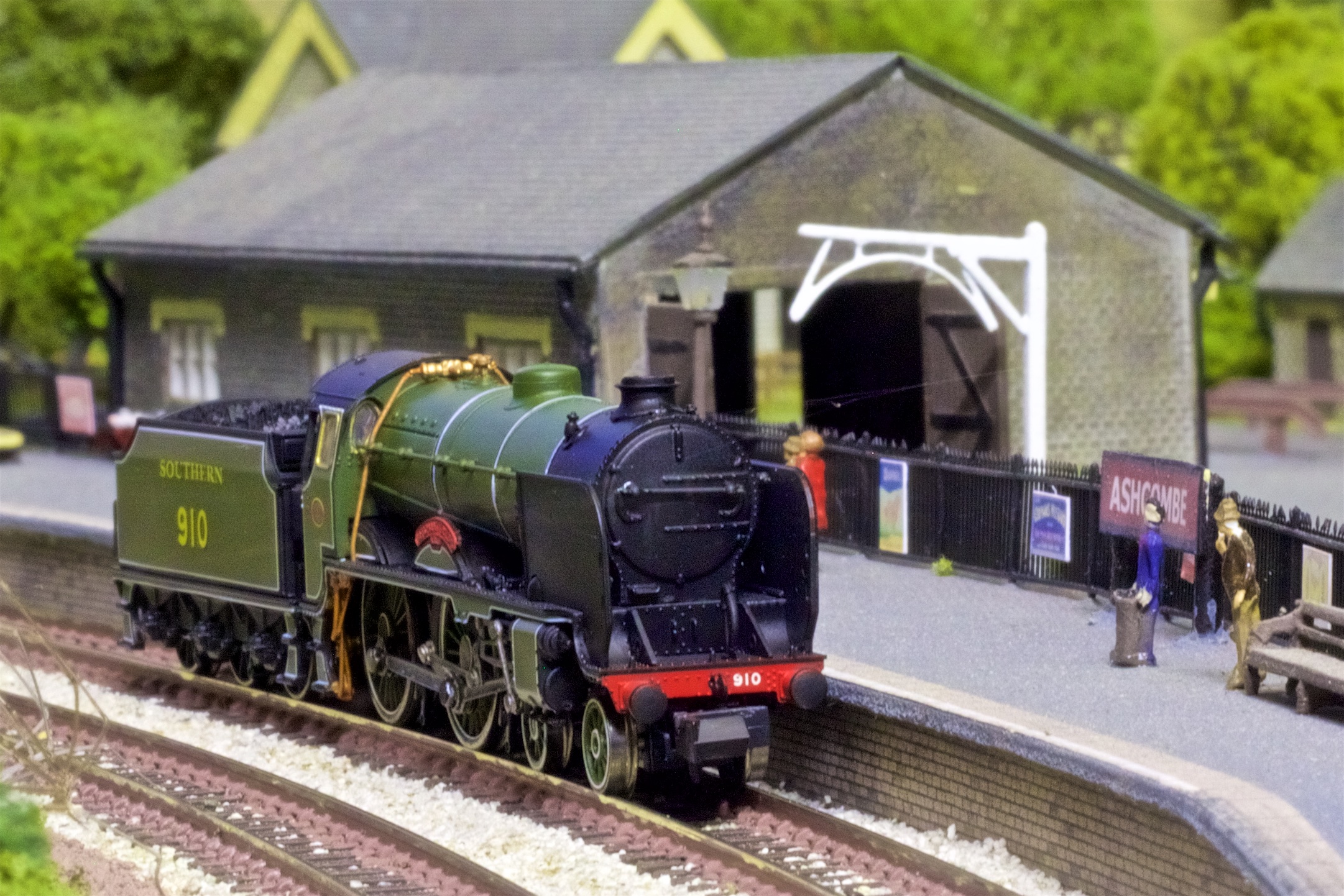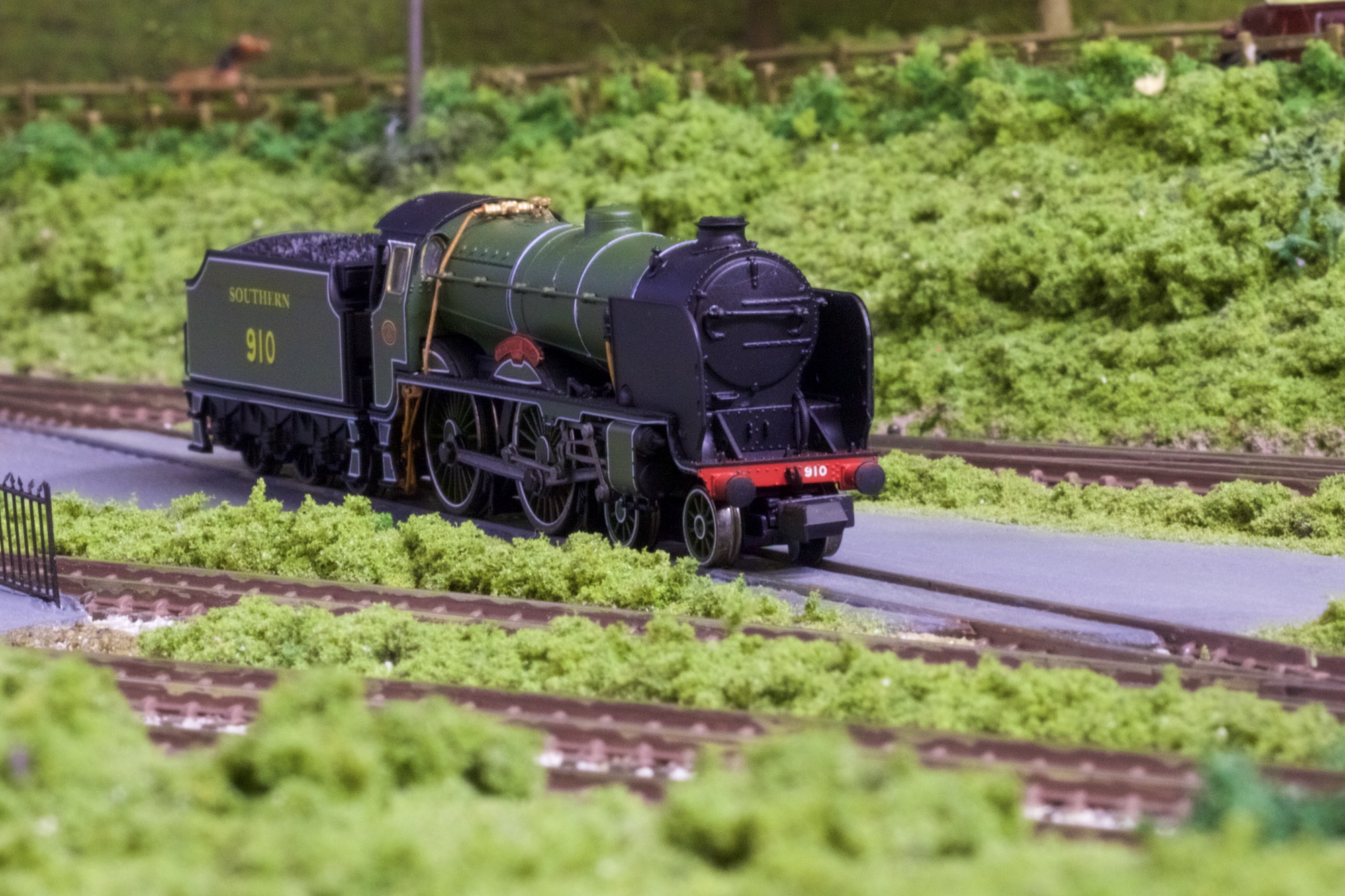Written by Richard Grigg
Introduction:
Built at the Southern Railway's Eastleigh works between 1930 & 1935, the ‘V’ Class were designed by Richard L. Maunsell. The engines initially took their name from famous public schools along the route of the SR (hence their nickname 'Schools') however, as their number increased, public school names from further afield had to be used.
Conceived mainly for express and fast passenger services, the 'Schools' were the heaviest and most powerful steam locomotives with a 4-4-0 wheel arrangement ever built in the UK. They were also the last to be built with this wheel configuration. Withdrawal of the class took place between1961 and 1962 and of the 40 built 3 survive today in preservation.
Recently, Dapol has released its N-scale examples of this magnificent steam engine and in this review we shall be taking a look at 'Schools' class no. 910, 'Merchant Taylors', in SR lined olive green livery (2S-002-004) with a RRP of £142.05 (£167.65 for DCC fitted).
Also available:
- 2S-002-000:- 'Repton' no. 30926 in BR green with late crest
- 2S-002-001:- 'Wellington' no. 902 in SR malachite green
- 2S-002-002:- 'Shrewsbury' no. 30921 in BR black with early emblem
- 2S-002-003:- 'Malvern' no. 929 in SR malachite green
In addition, Osborn's Models have commissioned Dapol to produce a limited edition run of 'Cheltenham' no. 925 in SR lined olive green, priced at £131.35.
Packaging:
As ever, Dapol's packing is recognisable by the blue & silver colour scheme. Under the cardboard sleeve is a tough and sturdy 2-piece hard plastic box which will protect the model from most knocks and bumps. Inside the box, the engine is suspended in a folded plastic frame which in turn is supported on all sides with foam pieces.
3 bags of spares and accessories are included which contain:
- Spare traction tyres
- Screwdriver adaptor
- Alternative NEM knuckle couplers
- Spare cab steps
- Cosmetic couplers
- Spare electric link wires
- Metal etched fireman's tools
- Spare drive shaft
Also enclosed is a care/maintenance sheet and Dapol's 2-year warranty slip.
Detail :
The amount of separately fitted and moulded detail that has been placed on this model is exquisite. With the removal of the N-gauge couplers, close up images would suggest this model is of a larger scale.
Starting at the top of the loco the chimney, dome, safety valves, whistle valve and cab roof are all neatly moulded and securely fixed in place, so reducing the chance of accidental damage. Separately fitted handrails are present along the smokebox, boiler and firebox assembly as well as crisply moulded rivets, boiler bands and factory fitted reverse gearing. The front of the model also features a handrail and moulded rivets on the smokebox door. In addition, lamp irons and a vacuum brake pipe are also fitted.
The cab exterior has flush glazing on the front and sides as well as handrails and more rivet detail. However, inside the cab, although there's moulded detail with a fitted reversing wheel, the aesthetics are ruined by the presence of the drive shaft running from the motor in the tender.
Beneath the running board the side rods and valve gear are intricately produced while the lead and drive wheels display the correct number of spokes. Also on show is the braking system along with the copper pipe work for the injectors and the cab steps. The detail on the tender is just as impressive with its fixed leaf spring suspension, foot steps, vacuum brake pipe, water filler cap and coal load, which can be weathered to appear more realistic.
Livery Application:
The SR olive green is beautifully rendered in a high quality satin finish together with the intricate fine lining on the cab, boiler, wheel splashers, sole bar, cab steps, cylinder casings, wheels and tender. The lettering and numbering is presented in the correct font and is printed crisply and clearly. One of the real highlights of this model has to be the metal etched nameplates. These could have been produced as 2D printed decals but the fact that Dapol decided to make them from etched metal is testament to the high standards the company place into their products.
Special Features:
The model features a 6-pin DCC decoder socket which is found in the tender. Due to the limited space (thanks to the motor) smaller decoders are recommended, such as the DCC23 from Guagemaster.
Performance:
This model's power comes courtesy of a tender mounted motor which links up to the loco's fully geared driving axles via the drive shaft running through the cab. Traction tyres are fitted to the rear drive wheels to aid adhesion. After the initial run-in, the locomotive performed smoothly and with very little noise. Despite this flawless performance, past experiences have left me wishing that Dapol would dispense with the drive shaft altogether from their tender engines and simply mount the motor in the loco itself. This would make more space in the tender for the DCC decoder and preserve the aesthetics of the cab.
Final Thoughts:
Dapol has once again pulled it out of the bag with yet another sublime model. It never ceases to amaze me how far the levels of detail on N-gauge models has come since the times of classic Graham Farish products with their pizza-cutter wheels.
The ‘Schools’ have been a long time coming but the wait has certainly been worth it and I've no doubt that these fine engines will take pride of place among many collections and SR/SouthernRegion inspired layouts.
Pros & Cons:
Pros
- Intricate detail
- NEM coupling sockets
- Smooth running
- Excellent haulage capacity
- Great value for money
Cons
- Drive shaft spoils cab interior and can sometimes affect performance.
With this I give an overall score of 9.5/10







